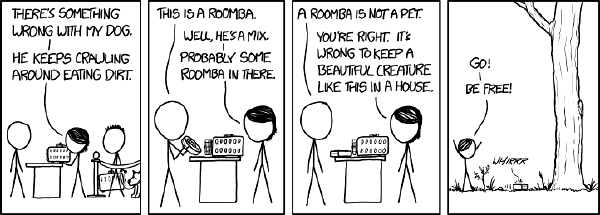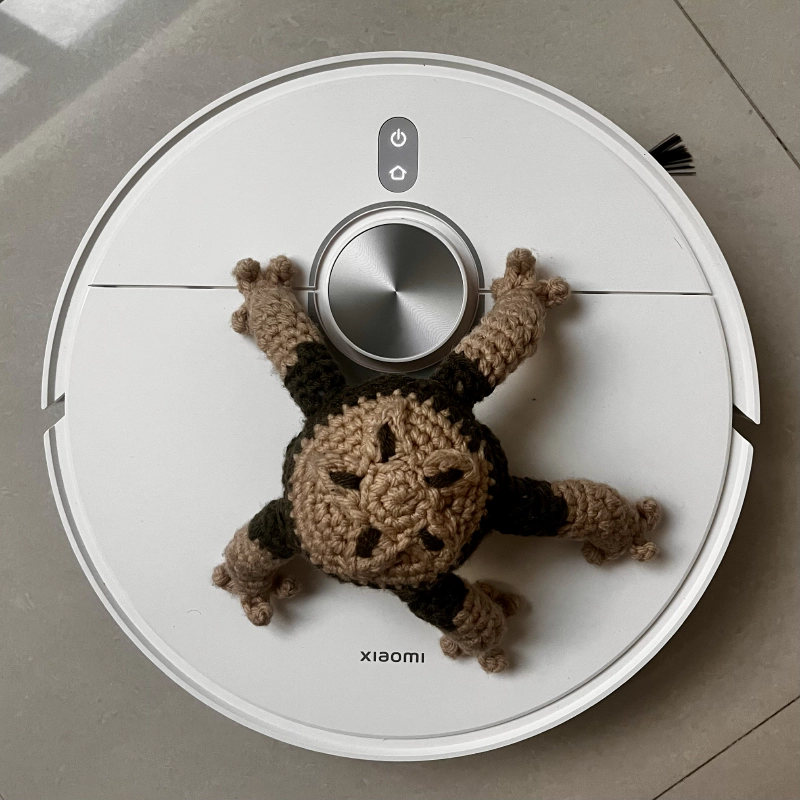So we’ve been thinking of buying a robot vacuum cleaner ever since we moved to a bigger 1 BHK apartment in Abu Dhabi. We have a decently sized hall with lots of empty space, and cleaning is a hassle. I work from home while my wife goes to the office, so home is my workspace and I love a tidy environment. But the reality is that I don’t enjoy the cleaning part. With construction going on nearby and the dusty weather in the UAE, the house needs sweeping at least every two days, plus there’s the amount of hair my wife sheds (I’m bald, so it’s definitely not mine!). Long story short, we need a robot vacuum and don’t mind doing occasional deep cleaning. We don’t have pets or kids, so something mid-range or budget-friendly would work for us.

When I started searching for robot vacuums, I was overwhelmed by the plethora of options and confusing naming conventions. I’m no expert, but the folks at r/RobotVacuums were incredibly helpful during my research. Think of this guide as notes or lessons I learned during the process - most are probably obvious to seasoned users. If you find any mistakes or outdated information, please comment or reach out, and I’ll keep updating this post.
The Major Players
The main brands I encountered were iRobot (Roomba), Eufy (by Anker), Ecovacs, Xiaomi, Dreame, and Narwal. Roomba popularized the robot vacuum concept, while Xiaomi outsources manufacturing to other companies. Xiaomi owns a stake in Dreame and Roborock as well.
Suction Power Marketing
Some vacuums specialize purely in vacuuming, while others focus on mopping or do both. Here’s the thing about suction power: while more suction is generally better, higher suction numbers don’t always translate to better cleaning performance. It’s become more of a marketing gimmick than a reliable performance indicator.
Brush Systems and Anti-Tangle Technology
There are several approaches to handle hair tangles. Some use cutting systems that slice tangled hair as the brush runs - either passive approaches like TriCut/EasyChop where spinning drives the cutting module like a razor, or active approaches like Midea (sold under Eureka overseas) that runs an electric shaver in the brush compartment. Others use combing approaches with sharp combs (Roborock’s low-end models and Eufy) or angled brush bristles with combs. The most effective approach uses airflow and angled bristles based on Archimedes’ screw - arguably the best system as it’s quietest and easiest to clean. This was first seen on Dyson’s anti-tangle cleaning head, which Narwal took inspiration from, and now many brands have similar approaches. Brands like Ecovacs also have “ZeroTangle 3.0” technology with V-shaped bristles. These systems can reduce hair tangles by 60-70% compared to traditional brushes, though you’ll still need scissors occasionally.
Basic vs. Advanced Stations
Entry-level vacuums come with a basic charging dock where you manually clean the mop pads and empty the dustbin. As you move up the price ladder, you get self-emptying stations that automatically handle dust disposal and mop cleaning.
Water Tank Configurations
Here’s where it gets tricky. Some vacuums don’t have internal water tanks - they wet their mop at the station, clean for a while, then return to rewet or clean the mop when it gets dirty or dry. Premium models have internal water tanks that continuously wet the mop or do so as needed. This is useful for larger floor areas since the robot doesn’t need to constantly return to the station, reducing cleaning time. However, some people prefer external tanks since internal water chambers require additional maintenance and have potential mold buildup issues over time.
Extendable Mop Design and Edge Cleaning
Premium vacuums feature extendable mops that can reach corners and edges more effectively. Look for “extending” or “FlexiArm” technology where side brushes and mop pads automatically extend when corners are detected. This reduces the typical 15mm gap most robots leave along walls to just 0-3mm, providing much better corner cleaning performance. It’s a nice feature but comes at a higher price point.
Cleaning Solution Dispensers: High-end models include dispensers for cleaning solutions. Some use proprietary cartridges (which can be expensive), though users have found workarounds by drilling holes and adding their own solutions. Others use refillable trays. The key is using non-foaming solutions designed for robot vacuums to avoid clogging or damaging internal components.
Climb Height Capability
How much a robot vacuum can raise itself is apparently a premium feature. Higher clearance means your robot can climb over thick carpets, rugs, or even small steps between rooms. New systems like Dreame’s ProLeap technology can handle 60mm thresholds using retractable legs (42mm first threshold plus 18mm second threshold right after). There are ramps available specifically designed to help robots navigate elevation changes, though I haven’t tried them yet.
Navigation and Obstacle Detection
The best navigation currently combines structured light/LiDAR or 3D dot matrix projectors with RGB cameras and good LED fill lights. LiDAR systems work in the dark but can struggle with black objects and mirrors, while camera-based systems need good lighting but handle dark objects better. Added RGB cameras are a premium feature where the robot sends photos of obstacles to your phone. These models can also function as surveillance cameras if you have pets - imagine a CCTV that can navigate your entire home!
Self-Emptying Variations
Self-emptying is more complex than it sounds. Some stations only empty dust, while others also empty dirty water and clean mop pads. For mop cleaning, basic models use regular water, while premium versions use hot water to better prevent mold growth. The most advanced models include hot air drying for the mop pads. Keep in mind that even “self-emptying” models need the dust bags replaced every 4-6 weeks, though this can extend to 75 or even 90 days if pet hair isn’t an issue.
Noise Levels
I didn’t consider this before buying, but robot vacuums are louder than what I had in mind. So if you’re someone who works from home and has meetings often, sound levels are definitely something to consider. More premium models tend to be quieter, with some operating at 50-55dB (quiet conversation level) versus 65+dB (vacuum cleaner level). Some robots even have “quiet modes” specifically for calls and work hours.
Recurring Costs
While buying, please consider the recurring costs as well. The mop pads, dust bags, HEPA filters, and brushes need replacement based on usage. In dusty environments like ours in the UAE, filters might need replacing every 2-4 months rather than the 6 months claimed.
Dock Size and Placement
Before you press order, have a look at the dock size, its power requirements, and placement as well. Those fancy all-in-one stations can be massive and require 4-5 feet of clearance in front, consuming significant floor space in small apartments. Some very latest models even have an option to have a water inlet and outlet similar to a washing machine if you don’t like manual emptying of water.
Privacy
If privacy is a concern for you, then you are in a tough spot. With multiple sensors that map your house and cameras, there are some real concerns about privacy. I’m not an expert in this, but this post by Vacuum Wars share some interesting insights. When I was shopping, I was also looking for something open-source and reliable, but couldn’t find anything that fit my requirements. Mine does not have a camera so I’m a bit relieved, but I don’t have pets or require complex image processing, so I’m not compromising on anything. But here are some interesting ones I saw:
- Valetudo is a cloud replacement for vacuum robots enabling local-only operation. It supports some popular models, but require you to hack into the model and root the device. It seems like the most legitimate and promising option so far.
- Bumper is a standalone and self-hosted implementation of the central server used by Ecovacs vacuum robots. It allows you to have full control of your Ecovacs robots, without the robots or app talking to the Ecovacs servers and transmitting data outside of your home.
- Awesome Vacuum is a curated list of free and open source software and hardware to build and control a robot vacuum. It was updated 4 years back, but the list seems interesting.
- Matic claims as the most private and secure robot vacuum with its in-device processing. It is not open-source so I’m a bit skeptical.

So which one did we end up buying? We went with the Xiaomi X20 Pro and bought it during the prime day sale. My main rationale behind choosing X20 Pro over X20+ was the hot air mop drying feature. I was able to get it at a cost of 1100 AED (~$270) with an extra one year extended warranty by an external provider. I like the peace of mind considering the number of moving parts and how frequently the machine operates.
I have used some Xiaomi products in the past in India and had no issues relating to service or spare parts. Considering the common Dreame and Xiaomi parts availability in Chinese e-retailers like Temu and AliExpress, I don’t think parts will be an issue for at least a couple of years.
Another thought process I had was that since Dreame L10 models have the cleaning solution feature, I believe I can add some non-foaming liquid to the X20 Pro without any issue (the manual says NO!). This is my assumption, but I might be wrong. From my little research, I also see that some Dreame-compatible TriCut brushes are available in the market that claim to work with the X20 Pro. So if tangling becomes a major problem down the line, I might explore those options as a potential upgrade.
At the time of writing, it’s been a day, so far things have been good. Too early for a review, but I shall post one soon and link it here!
(。◕‿◕。) [°-°] ヽ(°〇°)ノ
Special thanks to u/FarConcern2308 for the suggestions and being incredibly helpful in picking the right vacuum on r/RobotVacuums!
This is a living document based on my research experience. Feel free to share corrections or updates in the comments!
Update #1 - 29-07-2025, 15:00 GST
- Thanks to u/FarConcern2308 for corrections in stakes of Xiaomi in Roborock and Dreame
- Added a section for privacy
📚 Want to stay connected?
If you enjoyed this post, you might like my weekly newsletter 10+1 Things read by 2500+ curious minds from 94 countries. Each week, I share personal insights and 11 fascinating finds — books, articles, or random curiosities that spark ideas.
No pressure, but I'd love to have you along for the ride!
No comments yet.